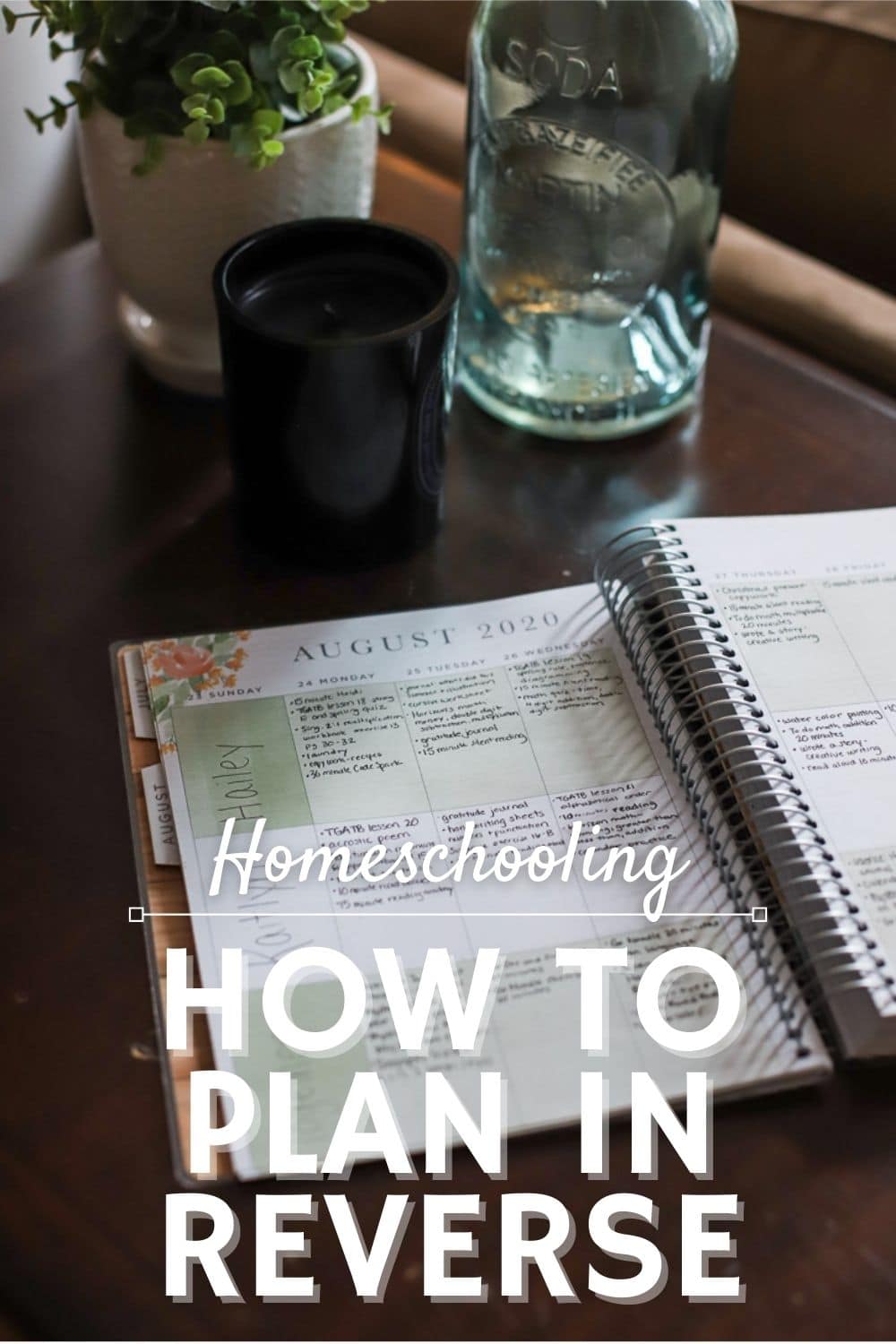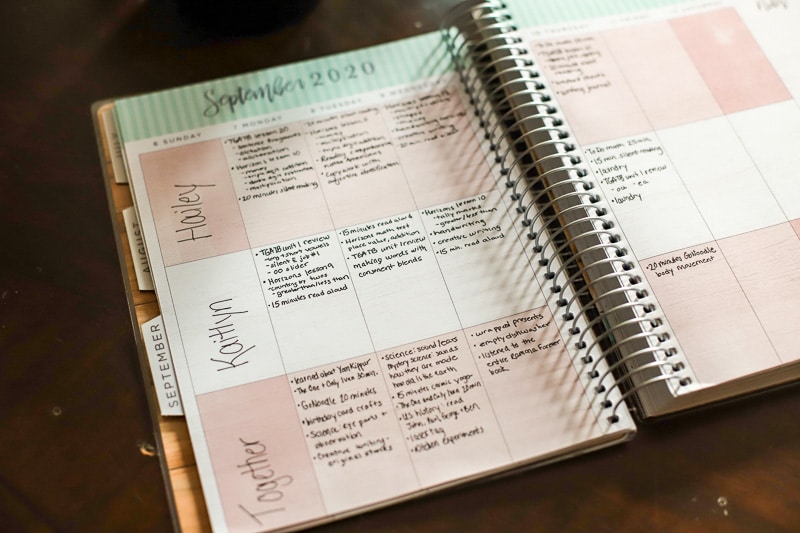
I came across a concept a month ago that has completely changed the way I plan (or don’t plan) our homeschool days. With this new set up, I feel like we are actually doing more learning activities with a lot less stress. I don’t know where the concept originated, but planning in reverse is making a wonderful impact on our homeschool environment.

What is planning in reverse?
Planning in reverse is simply the idea of writing down what you did rather than just what you plan to do. I used to plan our weeks on on Sunday, scheduling which math lessons and language arts activities we would conquer on each day. However, then life would happen and we wouldn’t get to a scheduled task and then it would be there, staring at me from my planner, not checked off and reminding me that I fell short of my goal. It was quite demoralizing to a lady who will add items onto her to do list simply to be able to check them off (I want credit for folding that laundry after all).
What does planning in reverse look like in real life?
Each week I have a basic idea of which subjects are working on from our third and first grade curriculum. I know we will do math and language arts each day, science typically on Mondays and Wednesdays, and history typically on Tuesdays and Thursdays. These require a little planning ahead to make sure I have any necessary books or materials, so I’ll do that on Sunday, but no longer do I map out every lesson for the week.
I bought a planner (The Happy Planner from Hobby Lobby) to begin tracking our progress. It’s structured into three rows so it’s easy for me to set up a row for Hailey, a row for Kaitlyn, and a row for tasks we do together (almost everything outside of math and language arts). As we go through our day, I scribble down what we do, what lessons, and what area of focus. For example, I’ll write The Good and the Beautiful, Lesson 20, sentence fragments, dictation, and alliteration.

While in North Carolina, we do not need to turn in lesson plans or records, planning in reverse would be a great way to create detailed records if you do need to turn them in. Find out more about what your state requires by reading this post.
The best part of this practice for me is seeing how much learning takes place outside of regular lessons. As a mom that values life skills as much as academic, I like being able to track items like “made scrambled eggs for everyone” or “learned to wrap presents/address a letter/sew a button” just as much as I like to track that she correctly diagrammed a sentence.
At the end of the week, it’s incredibly satisfying to see our hard work all there on the page. Some weeks are heavier with academics, while others are more weighted with life experiences like cooking, swimming, or learning to change out kitchen cabinet pulls. However, planning in reverse has helped me to feel that it is all valuable in our goal of raising well-rounded, curious, self-reliant kids.
Practical tips for planning in reverse
- Use open and go curriculum. That way you always know what comes next.
- Assign independent work to children each day as they get older. I use this free printable responsibility chart to lay out what is expected of the girls each day. I work on math or language arts with one while the other completes chart items.
- Each Sunday, make a note of any “must-do” items. Scribble them on your planner or on a chalkboard, so you know those items are top priority.
- Use a planner with plenty of room to record daily tasks.
- Make sure to write down other learning ventures you take on outside of regular lessons. Hailey is working on a very copy work-heavy Christmas present for a family member. I write that down because it absolutely counts as copy work and part of language arts. Hikes count as time spent exploring nature. reading picture books counts as science or history, board games count (check out these favorite math-focused board games), TV shows can count. Basically, planning in reverse has made me see that so many things “count.”
- Ask your kids what they want to learn about. We’ve spent some mornings taking a deep dive into subjects I never would have planned out and they end up being some of the most engaging learning moments for us all. Mystery Science is a great place to begin for a lot of kid questions!
I love sharing things that have made my life easier and for us, planning in reverse has pumped new energy and joy into our days!





No comments:
Post a Comment